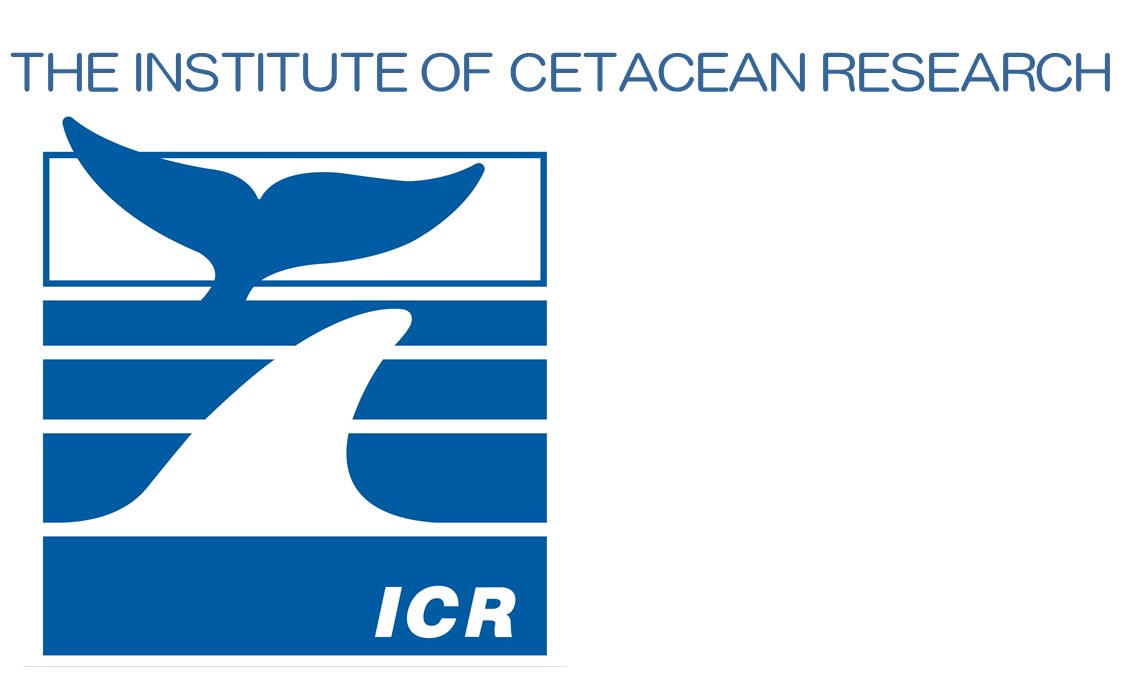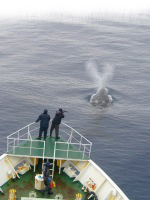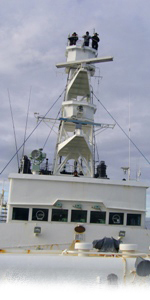- You are here:
- Home>
- English Sitemap>
- Media>
- Harassment & terrorism>
- SEA SHEPHERD ESCALATING VIOLENT ATTACKS
SEA SHEPHERD ESCALATING VIOLENT ATTACKS
2008/03/07
The Institute of Cetacean Research today said it was disappointed that more serious means were required today for defending its research vessels in the Antarctic against more violent attacks by the terrorist group, Sea Shepherd.
During the afternoon, the Steve Irwin approached the Nisshin Maru four times. Several butyric acid bottles were thrown by the activists and landed and smashed on the Nisshin Maru bridge wing and others landed in the Antarctic.
The ICR today rejected all claims by Sea Shepherd that a rifle was fired at Sea Shepherd cult leader Paul Watson.
"No-one shot at Paul Watson. His claim that we shot at him and he has the bullet that was stopped by his bullet-proof vest is more fiction for articles for the Australian media," Mr Minoru Morimoto, the Director General of the Institute of Cetacean Research, said.
"It was, however, necessary to increase our measure of defence against Sea Shepherd, which has continually attacked today throwing bottles containing not-so-harmless acid.
"Following previous incidents on 3 March, it was necessary to provide a stronger incentive for them to keep their distance from the Japanese vessels," Mr Morimoto said.
Japanese Coastguard on board the Nisshin Maru today gave clear and loud warnings to the Sea Shepherd vessel during two passes by their vessel.
On the third pass, Coastguard members initiated throwing by hand three "sound balls" (distraction devices used in training). These devices -called Keikoku touteki dan in Japanese - are commonly termed "thunderflash" devices in other Western countries.
Sea Shepherd continued to approach and a further four sound balls were delivered.
These explosive devices give a loud bang, but are harmless and used in military training. They are not repercussion grenades nor are they stun grenades, as claimed by Sea Shepherd. "These are warnings to Sea Shepherd to stay away from the Japanese research vessels. We urge them to take our advice," Mr Morimoto said.
Butyric acid is a medium strong acid. It attacks many metals and can be absorbed into the body by inhalation or its vapor. It is corrosive to the eyes, the skin and the respiratory tract. "Of course, it will be causing damage to the Antarctic environment," Mr Morimoto said.
Evidence of these attacks by the group is documented on the ICR website:
http://www.icrwhale.org/eng-index.html




